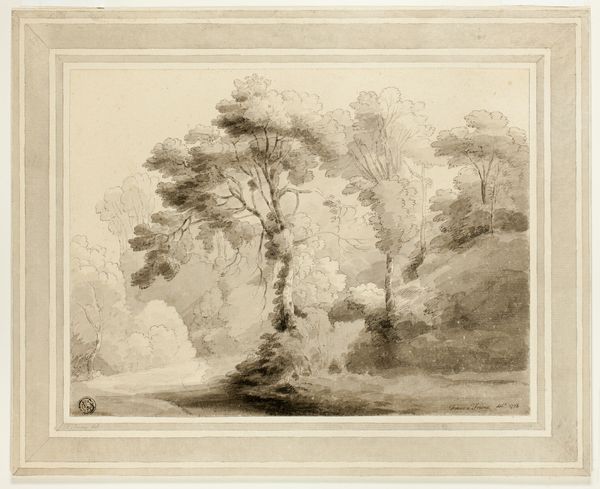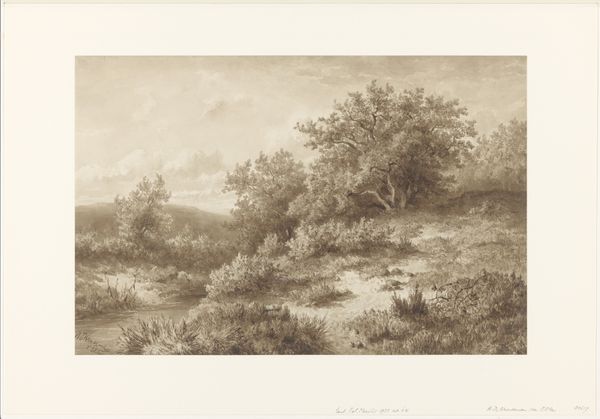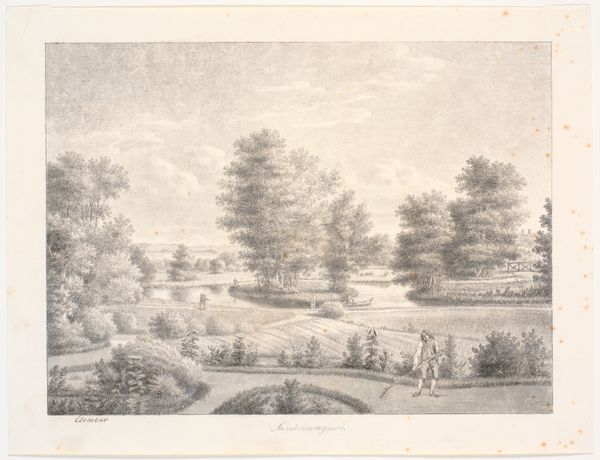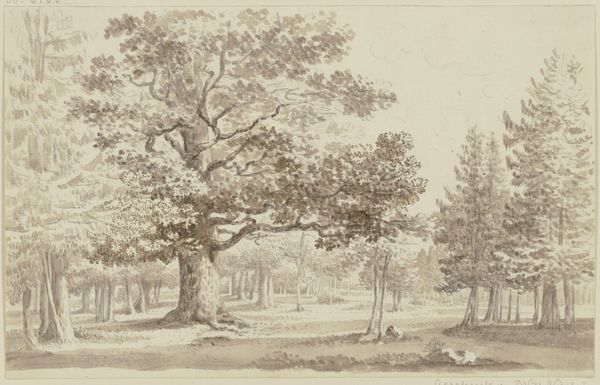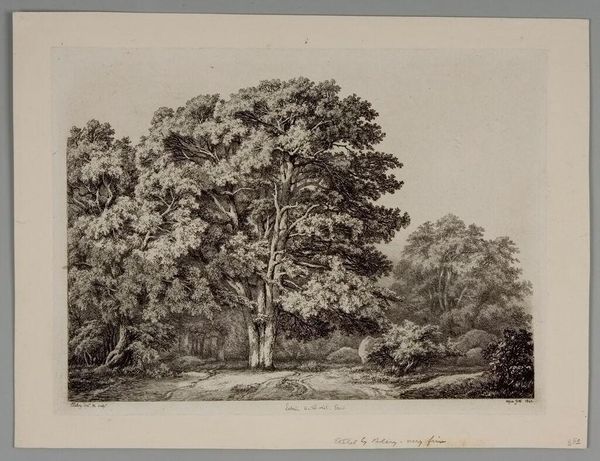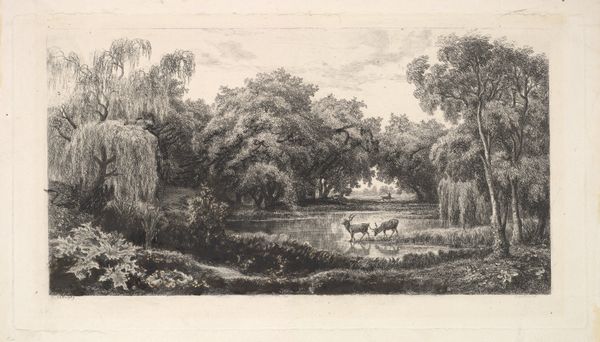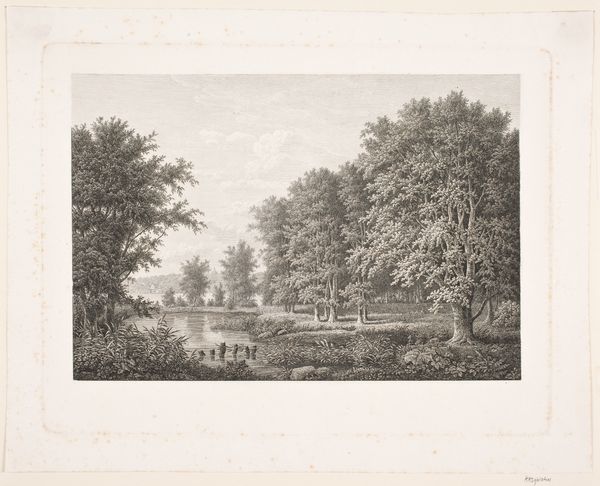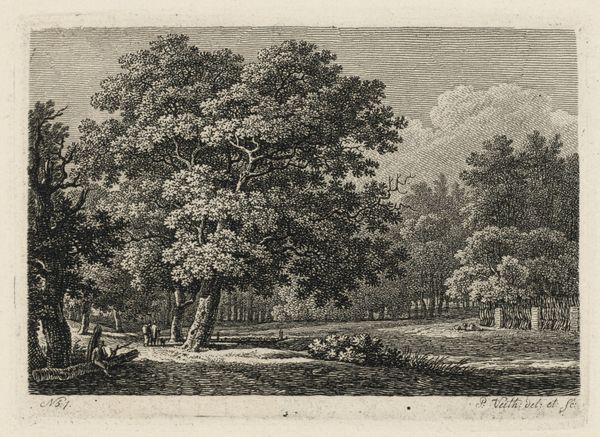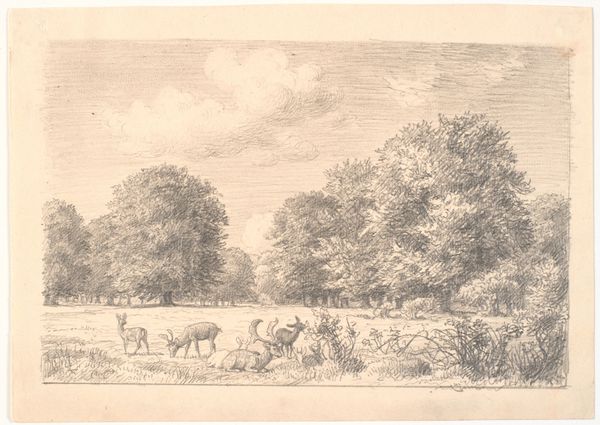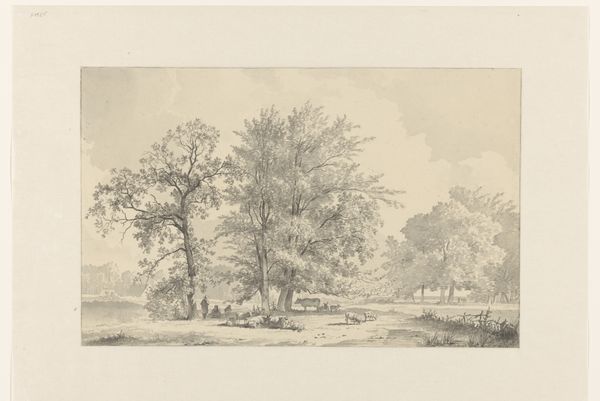
drawing, etching, plein-air, paper
#
drawing
#
etching
#
plein-air
#
landscape
#
etching
#
paper
#
romanticism
#
botanical drawing
#
genre-painting
Dimensions: 352 mm (height) x 497 mm (width) (bladmaal), 293 mm (height) x 438 mm (width) (billedmaal)
Curator: This is Samuel Mygind’s 1814 etching, "Skovparti med to liggende køer"—or "Woodland Scene with Two Reclining Cows". Editor: Immediately, I’m struck by its pastoral calm. It has an almost sepia-toned, antique quality, emphasizing tranquility and an easy-going relationship between animals and nature. Curator: Notice the technique—it's a highly detailed etching, rendered en plein air. Look at the meticulous cross-hatching and the precision in capturing the textures of the leaves and bark. There's a formal control and mastery here that aligns perfectly with Romanticism's interest in nature. Editor: Absolutely. And within that, consider Mygind’s portrayal of agrarian life against the backdrop of early 19th-century Denmark. It wasn’s a simple return to nature, it also suggests ideas about ownership, land use, and access in relation to agricultural and aesthetic values that are often ignored. Who is working? Who gets to rest? Who are the natural inhabitants of this place and what claims can they make? Curator: It's about harmony and proportion, reflecting ideal naturalism. Editor: Is it, though? Or are these bucolic images masking the human intervention and restructuring involved in Danish Romanticism’s natural themes? Curator: Perhaps both. The idyllic scene invites us to contemplate our connection to nature— but filtered through a specific lens— that is, as cultivated and consumed by a landed class that produced and enjoyed such landscapes. The placement of the cows in the foreground provides scale, offering the eye resting points across the planes. Editor: True. We have to accept that these landscapes often reinforced certain ideas, and suppressed or excluded other aspects of daily reality, namely those doing the hardest physical work that created wealth for Denmark. So there’s both beauty and maybe erasure here. Curator: Indeed. It’s this delicate interplay that renders this work a fascinating artifact and experience. Editor: Agreed, it seems simplicity and beauty is more complex upon closer examination.
Comments
No comments
Be the first to comment and join the conversation on the ultimate creative platform.

